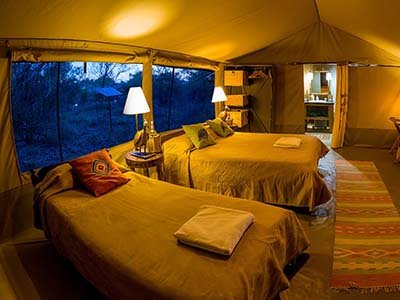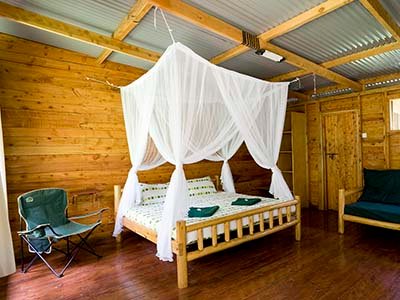Mahale National Park
Mahale Mountains National Park was created in 1984. It runs 60 kilometres from north to south and is 1613 square kilometres in area. The elevations are between 773 and 2,462 metres (Mt Nkungwe). The park is effectively in half due to the mountain range.
Mahale National Park – biodiversity hotspot
The enigmatic Mahale Mountains, a worldwide biodiversity hotspot, rise from Africa’s verdant core. This is the best area in the world to see wild chimpanzees and many other species, some of which are exclusive to this region alone.
Only 100 kilometres north of here is where Stanley famously said, “Doctor Livingstone, I assume.” The location Livingstone chose to conceal himself was perfect. Visualize the rocky, jungle-covered peaks of Lake Tanganyika that soar over two kilometres above you, only to drop into the deep blue sea and pristine beaches below. The true nature of eye candy is still a mystery to the majority of the population.
Nkungwe refers to the biggest peak in the park, which the indigenous Tongwe people regard as holy. There are a lot of mountains and forests there, and a wide range of plant life. Over 1,200 different species have been identified, however, it is believed that there are closer to 2,000 in total. This high rainforest is home to 10 of the country’s twelve monkey species, making it the best place to see them.
Chimpanzee tracking will be the highlight of your trip. A whiff of excrement or a remnant of a half-eaten fruit takes you farther into the bush. Though chimpanzees may also be seen in Gombe, Mahale is the finest site to see them. About 600 chimpanzees, spread across 15 groups, call the park their home. They represent Africa’s easternmost wild chimpanzee population. After a Japanese study in the 1960s, they became used to humans.
Blue monkeys, red monkeys, Angola colobus monkeys, yellow baboons, and red-tailed baboons are some of the other primates whose cries may be heard down the mountainside. But seeing monkeys isn’t the only thing to do here.
Along the western side, you may see docile warthogs and bush pigs, as well as giraffes and even the uncommon roan and sable antelope. Fewer than a hundred kilometres separate Katavi National Park from Mahale, and it is thought that a number of species travel freely between the two. The park is a haven for rare flora and fauna, including butterflies and birds such as the bamboo warbler and Stuhlman’s starling.
Lake Tanganyika, with its dazzling clarity, is a boon to aquatic life. Possibly holding one-sixth of the world’s freshwater, it is the biggest and deepest freshwater lake. The lake is home to almost a thousand different kinds of fish, and it is the only nature reserve in all of Tanzania where both Nile crocodiles and slender-snouted crocodiles thrive.
Climate and Weather in Mahale National Park
Daytime highs range between 26 and 30 degrees Celsius, with occasional 35-degree highs, while nighttime lows average between 15 and 18 degrees Celsius, with significantly colder temperatures higher in the mountains.
The months of October and November fall within the dry season, which begins around the middle of May. November through May is the rainy season (less rainy from January to February). There are no seasonal shifts in the forests.
The Seasonal Peak
The greatest time for woodland strolls is between June and October, however, the mild rains of October and November shouldn’t be a problem.
How to get to Mahale National Park
Mahale is one of the most isolated parks, with only boat or plane access.
By water, take the MV Liemba to the hamlet of Mgambo on Wednesday for around 8 to 10 hours, then return on Saturday for a 20-kilometre voyage to the Bilenge Park headquarters by hired motor boat, or take a local taxi for two days or a fast boat for three hours straight to Mahale.
From June through October, several safari firms provide private charter flights from Arusha, Kilimanjaro, Dar es Salaam, and Zanzibar to the Bilenge park headquarters.
Accommodation in and around Mahale National Park
There are two privately owned tented lodges, a banda at Kasiha, and two campgrounds inside the park. You may reserve a cabin or a banda in the park.
What to do in Mahale National Park
Guided one-day-to-seven-day hikes in the mountains, as well as snorkelling, swimming, diving, sport fishing, boat tours for bird viewing, and chimpanzee tracking in the forest. Mount Mhesabantu is the second-highest peak in the park, and its 2,100-meter ascent may be completed in a single day.
An exciting journey through time, learning about the Tongwe people’s historic pilgrimage to the spirits of the mountains, followed by a refreshing dip in the lake’s clear, refreshing water.
IMPORTANT: For your own and the chimpanzees’ safety, we have instituted several measures. Plan on spending at least two days in Mahale in order to increase the likelihood of seeing these animals in their natural habitat.




